Embed presentation
Downloaded 129 times
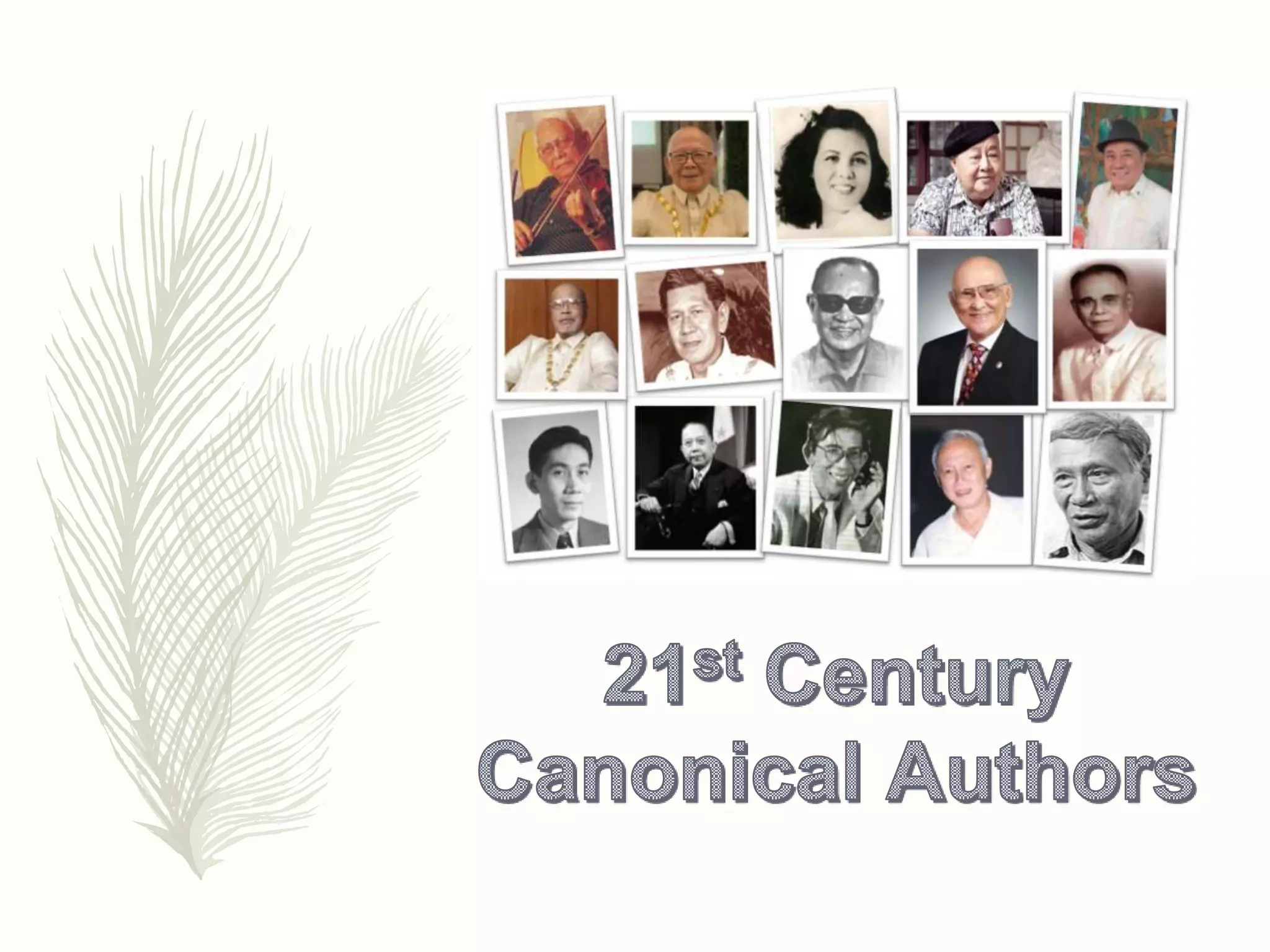

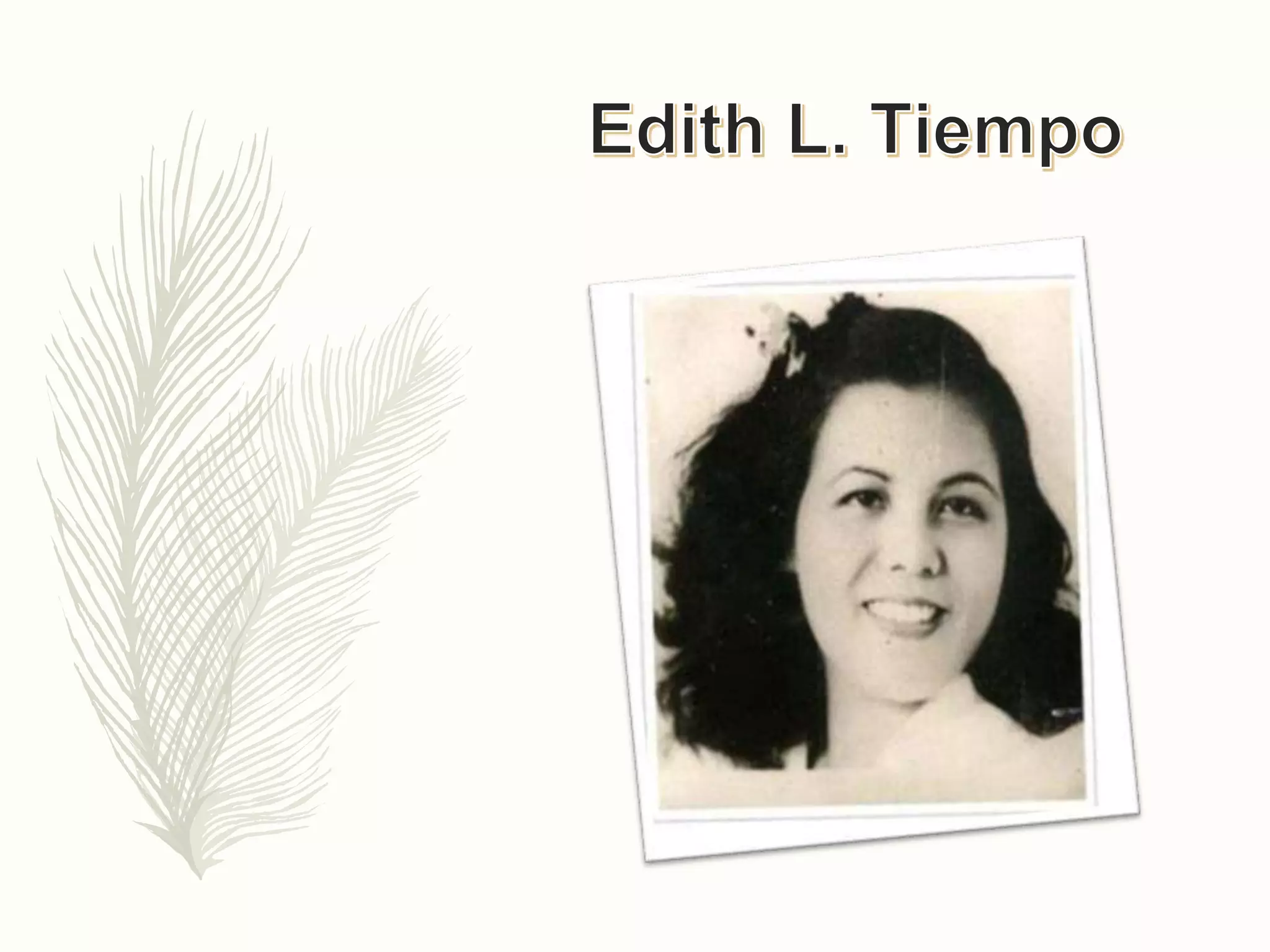

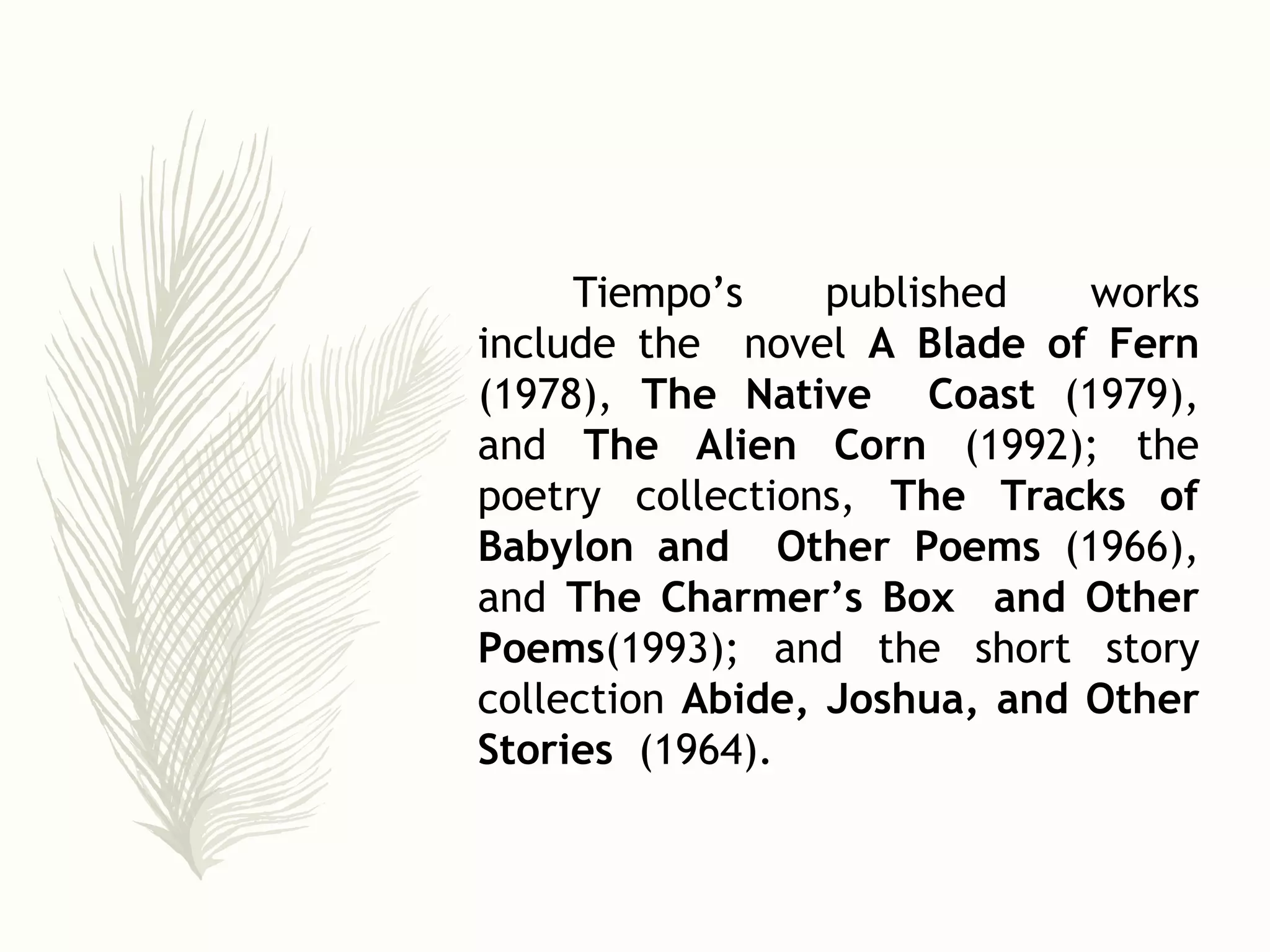





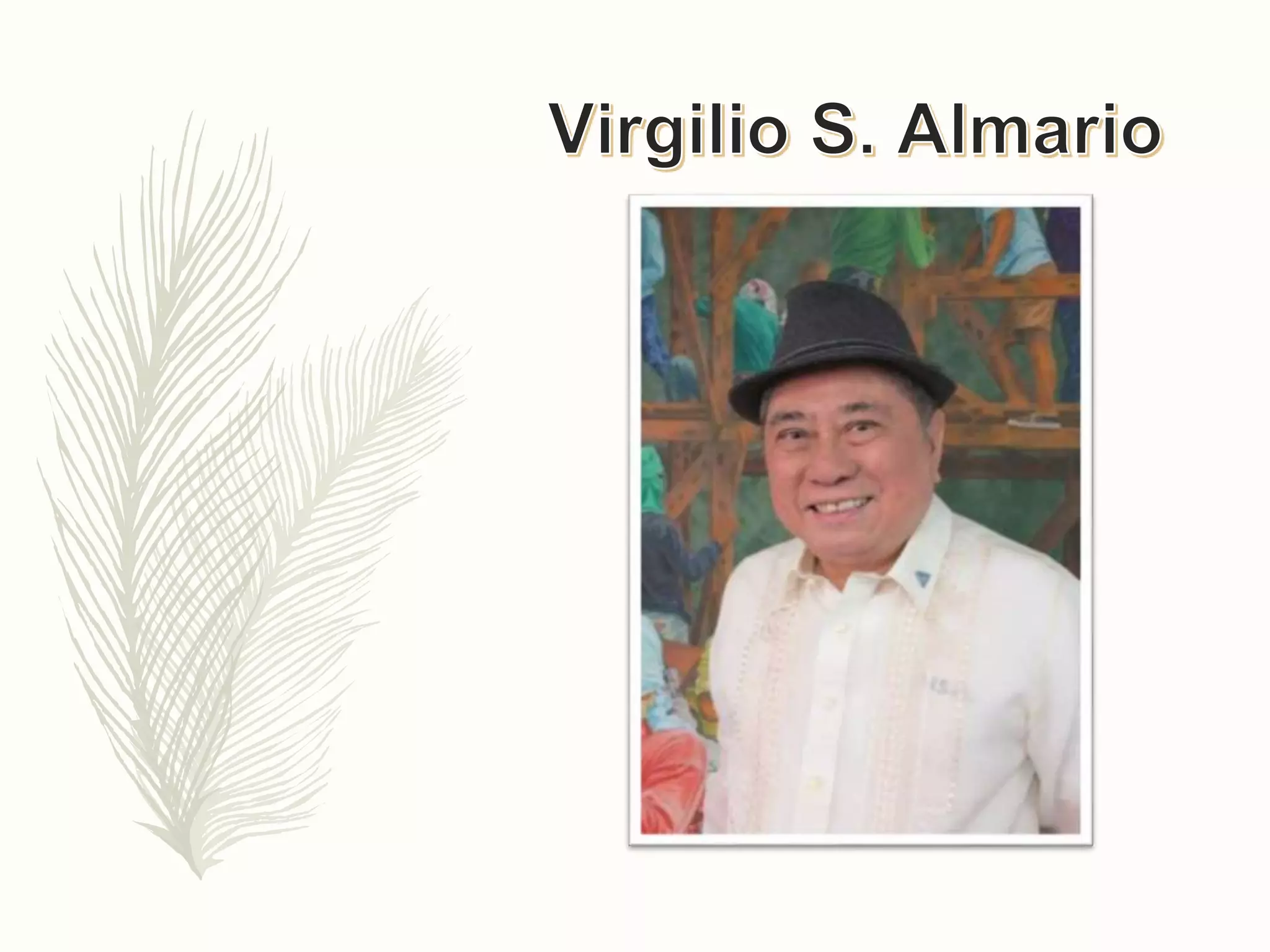
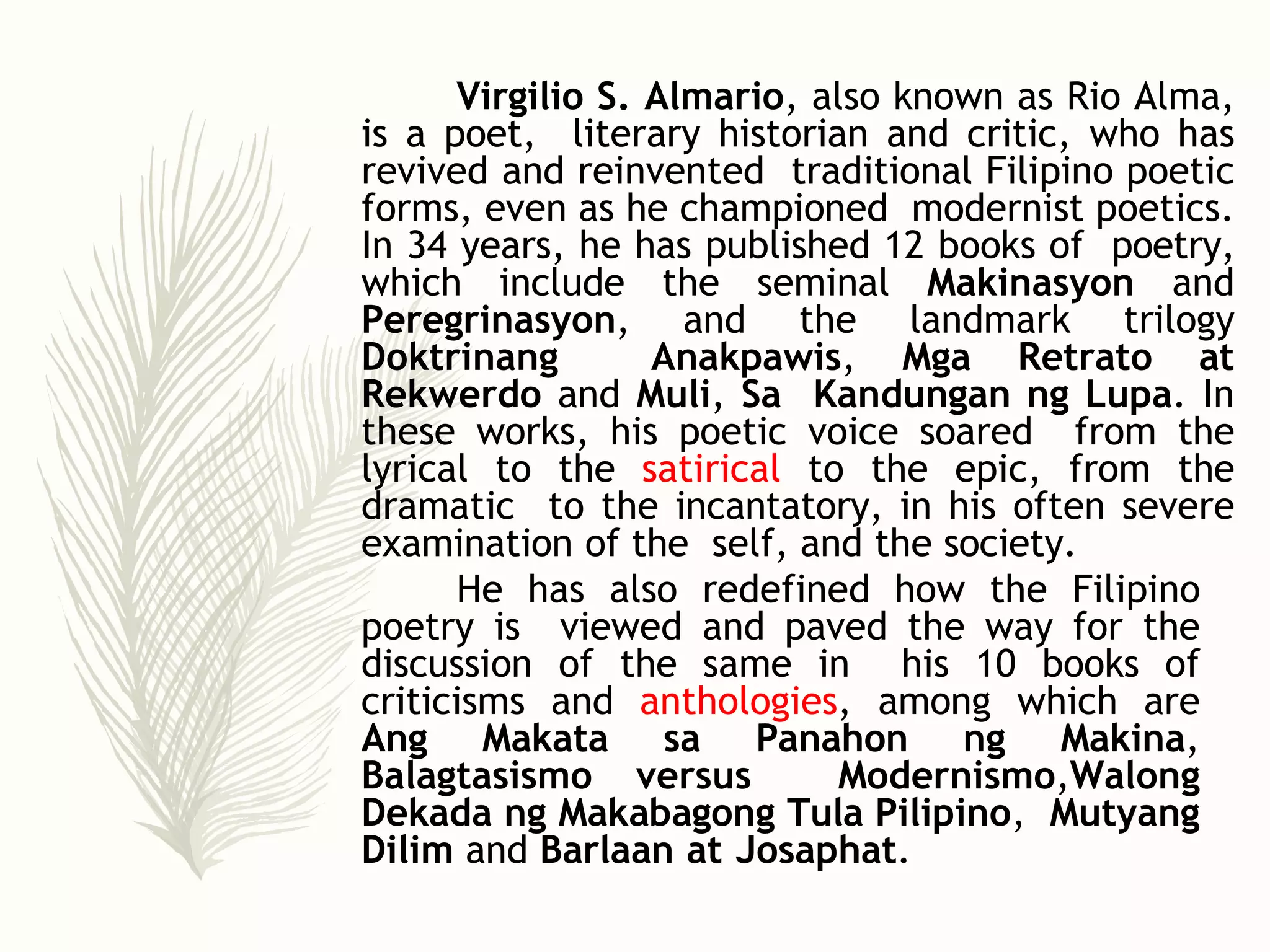



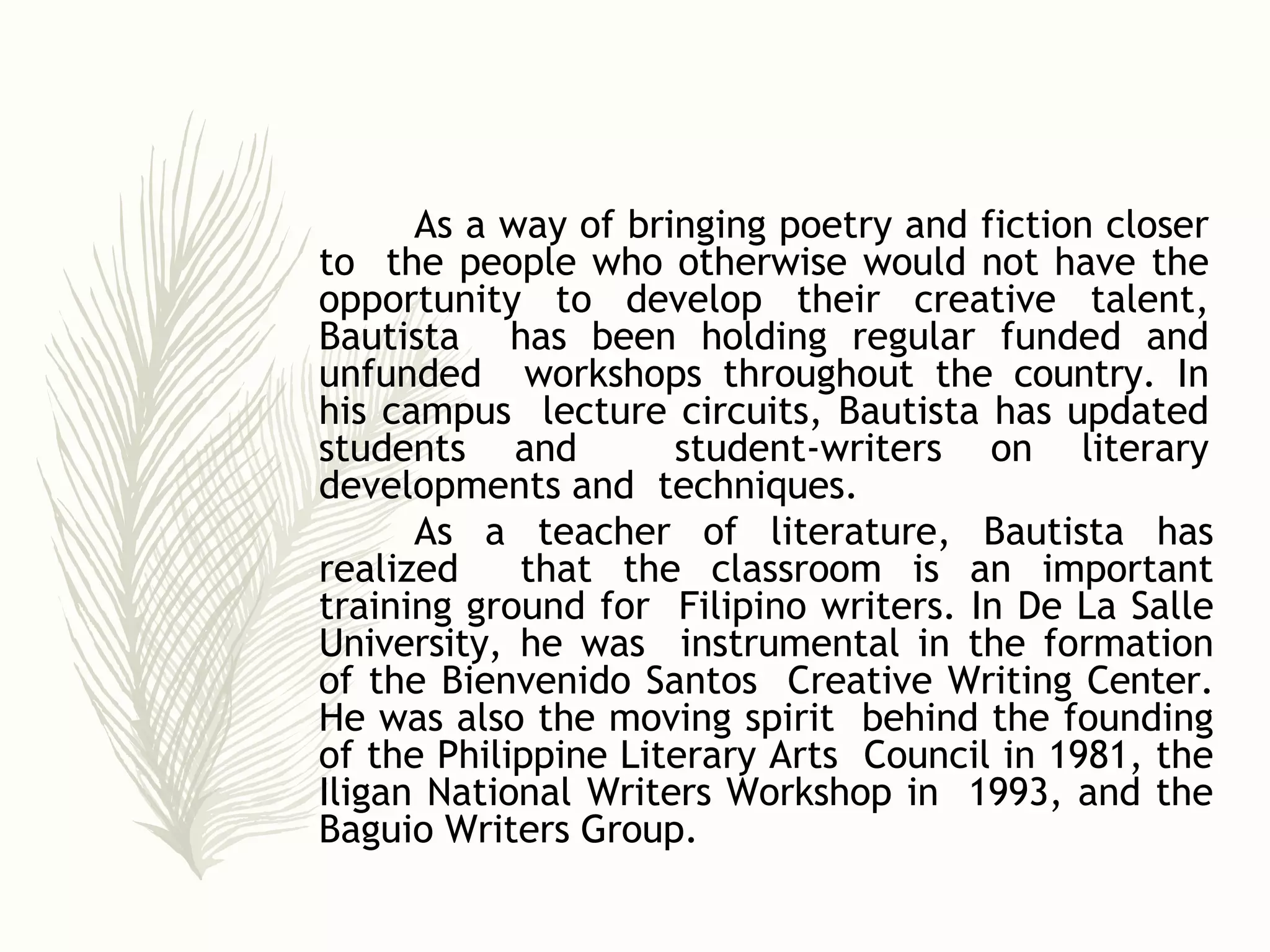



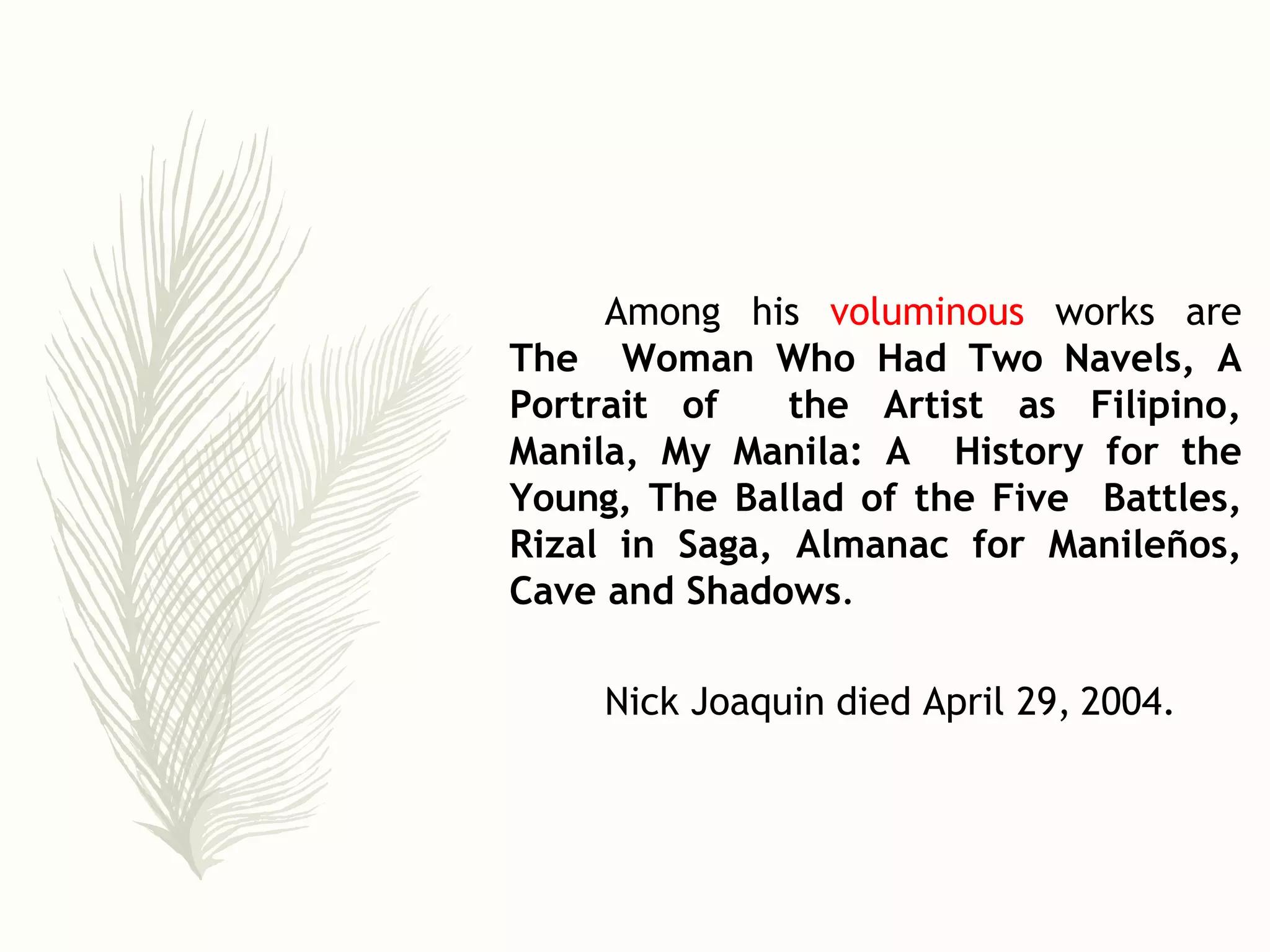


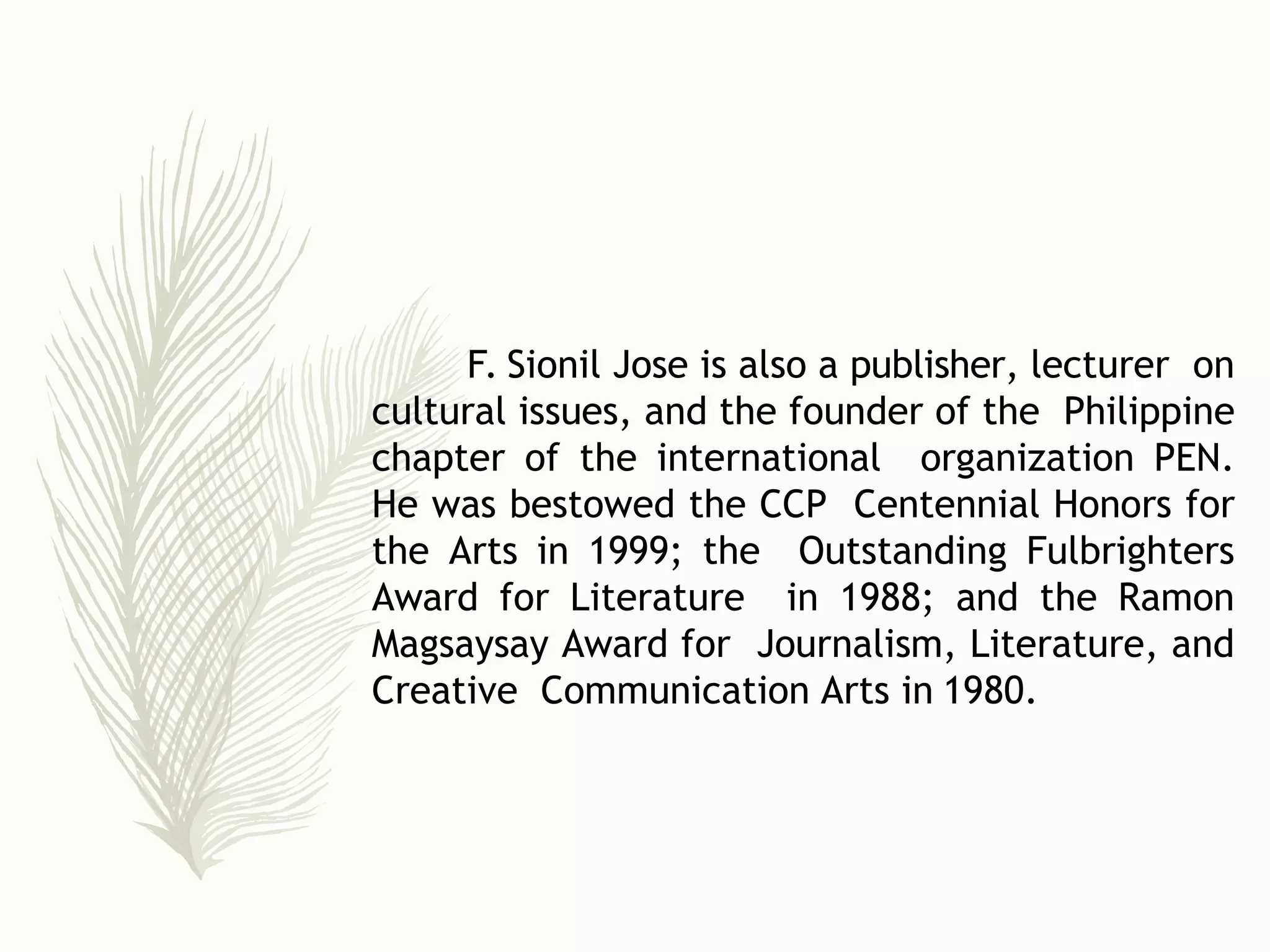
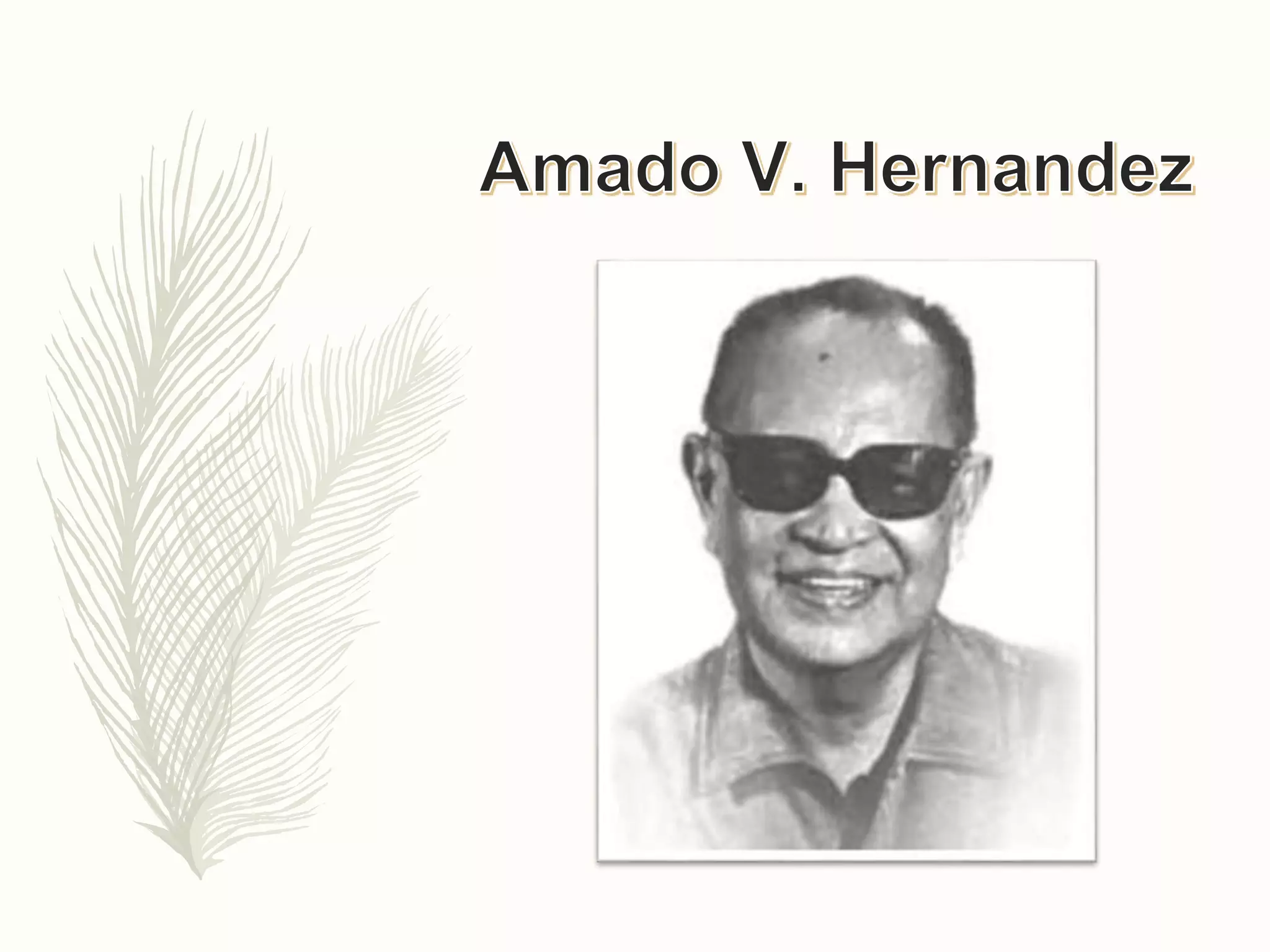
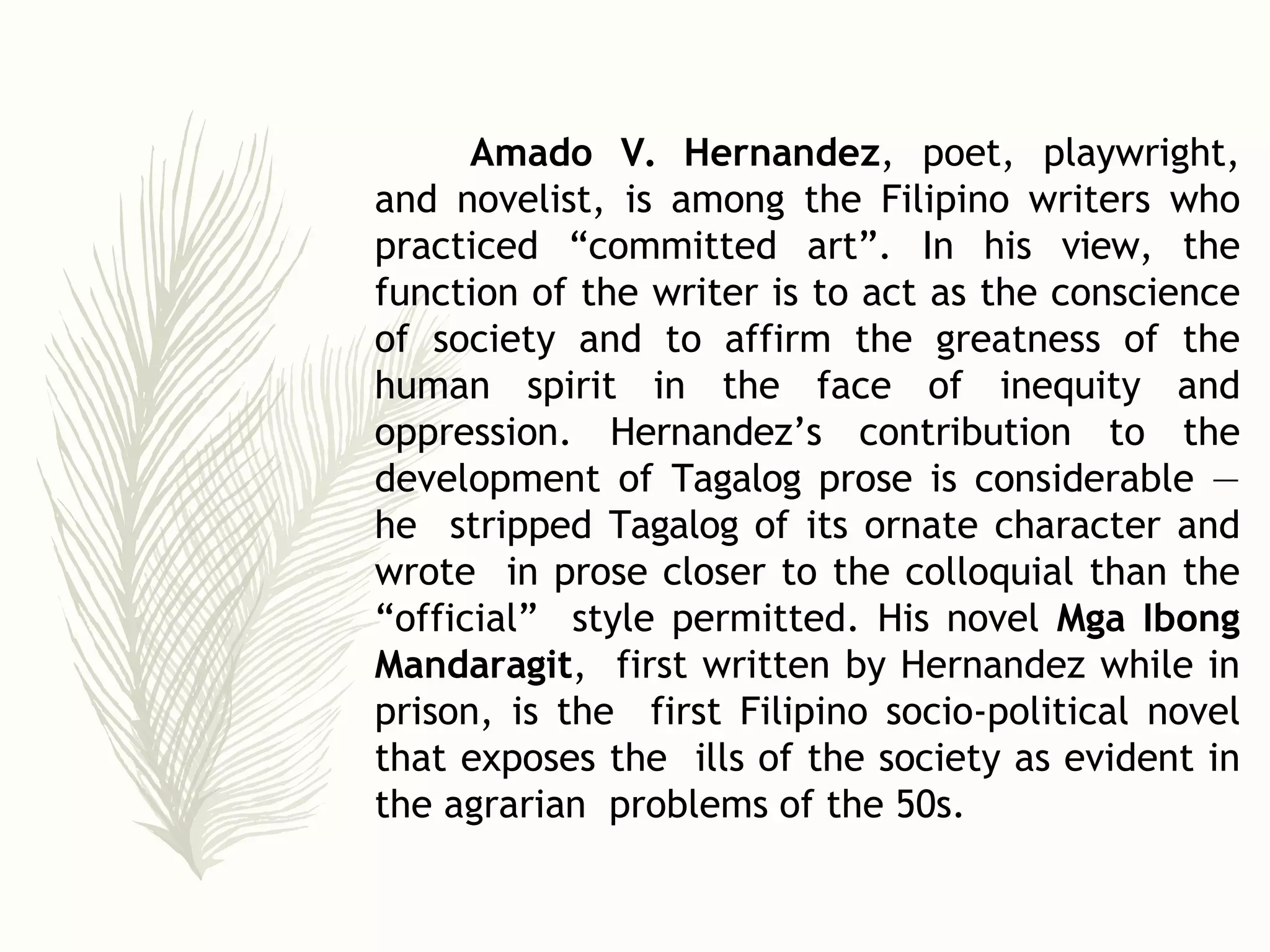

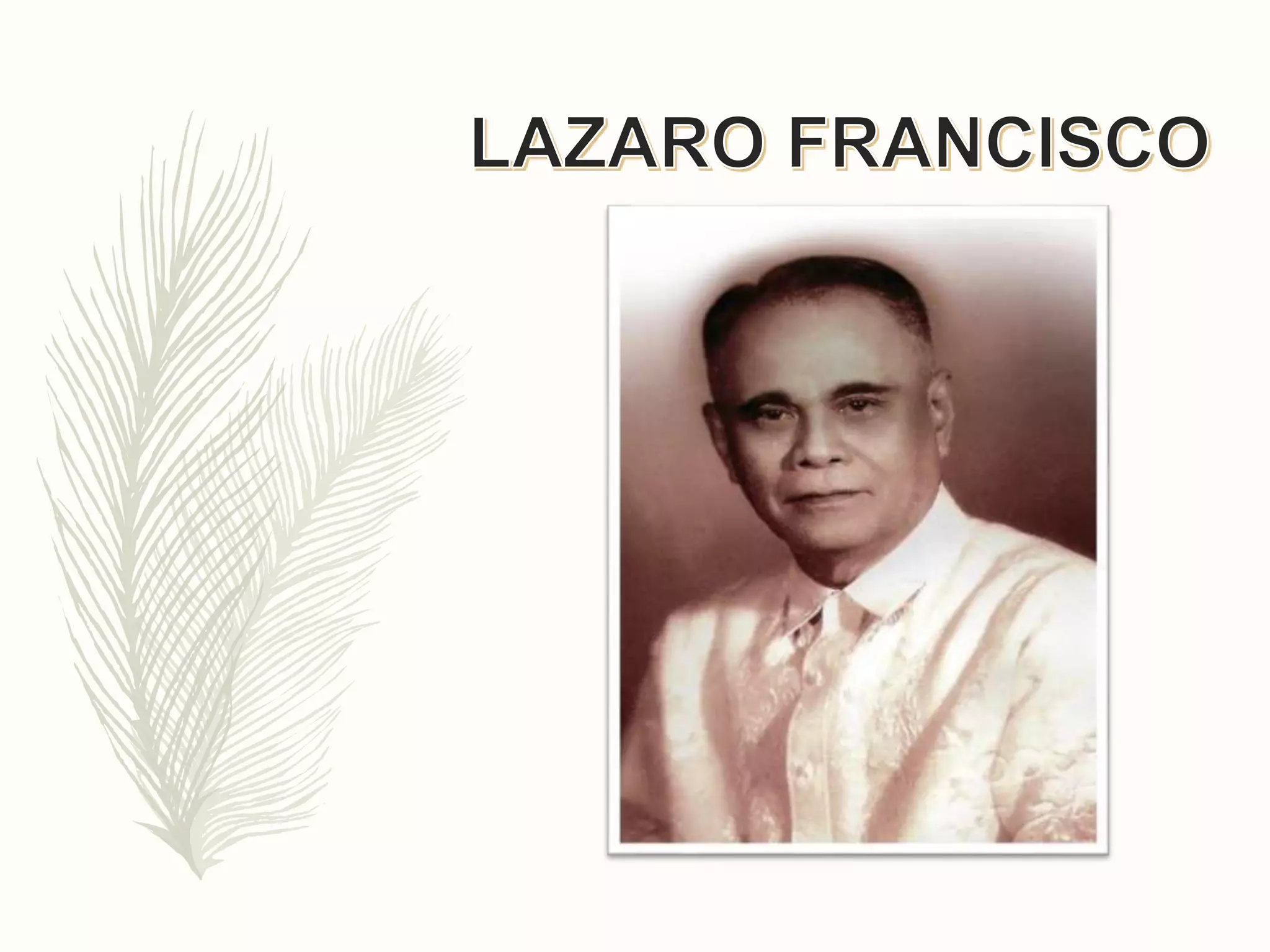
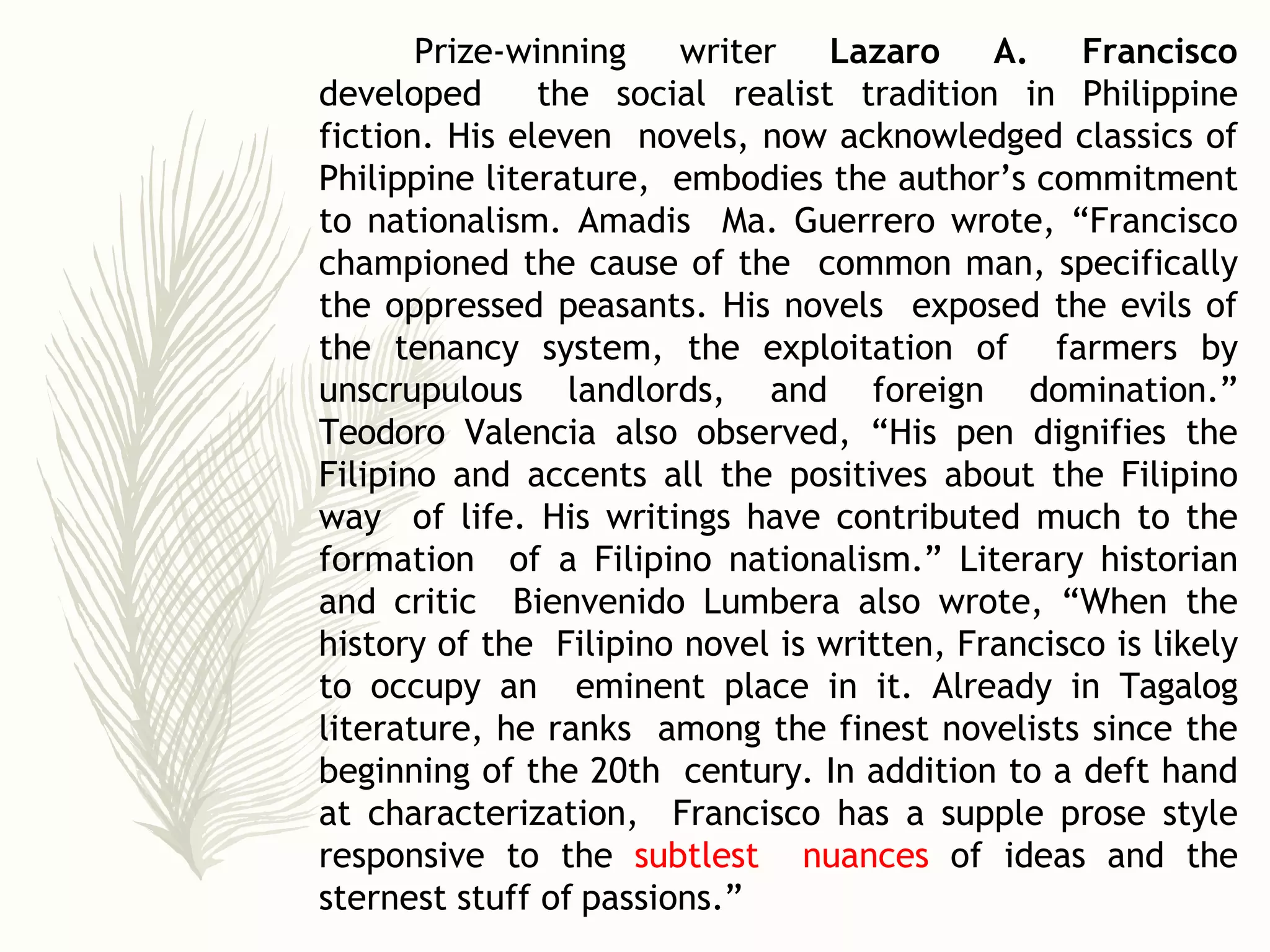


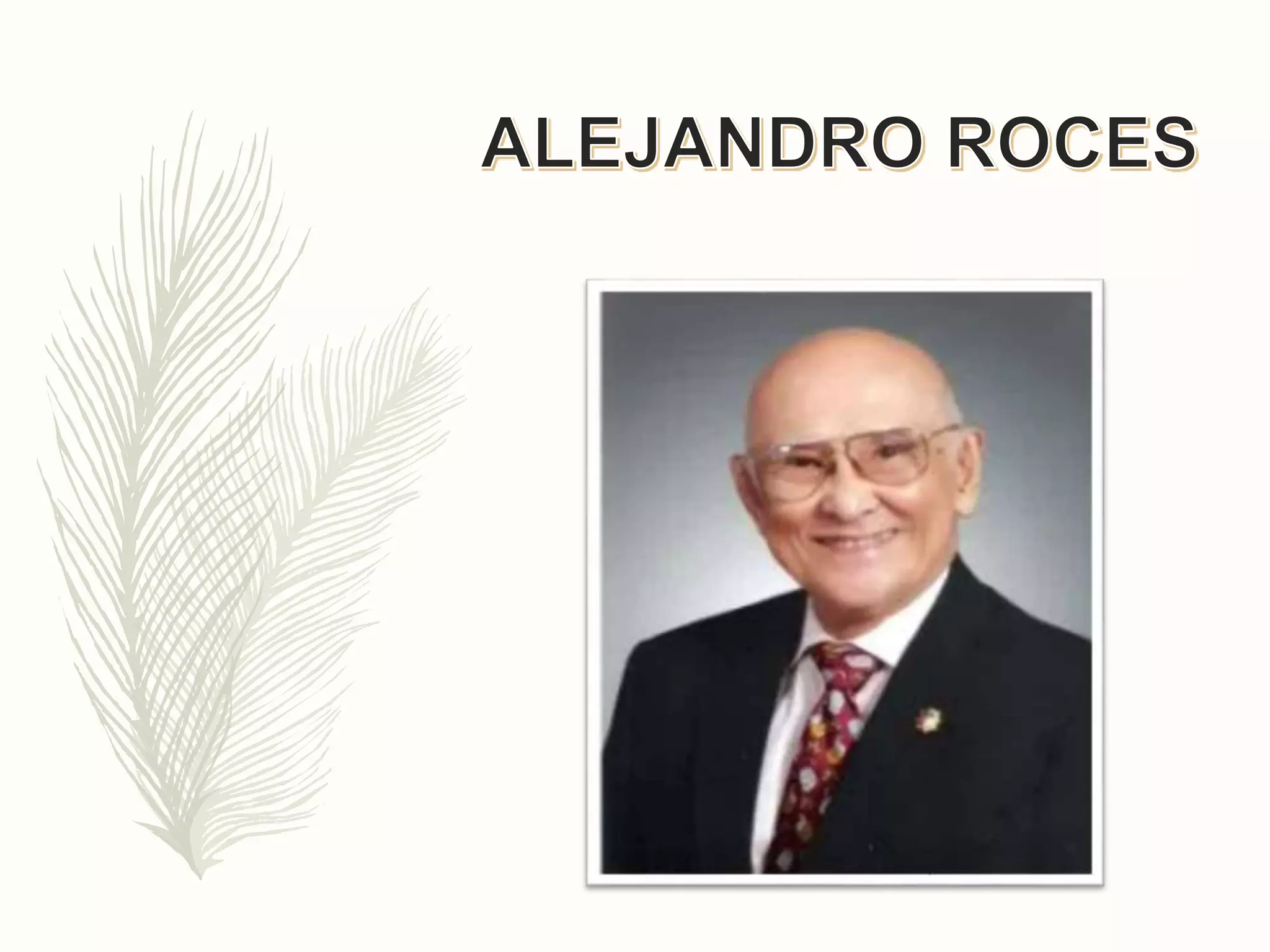
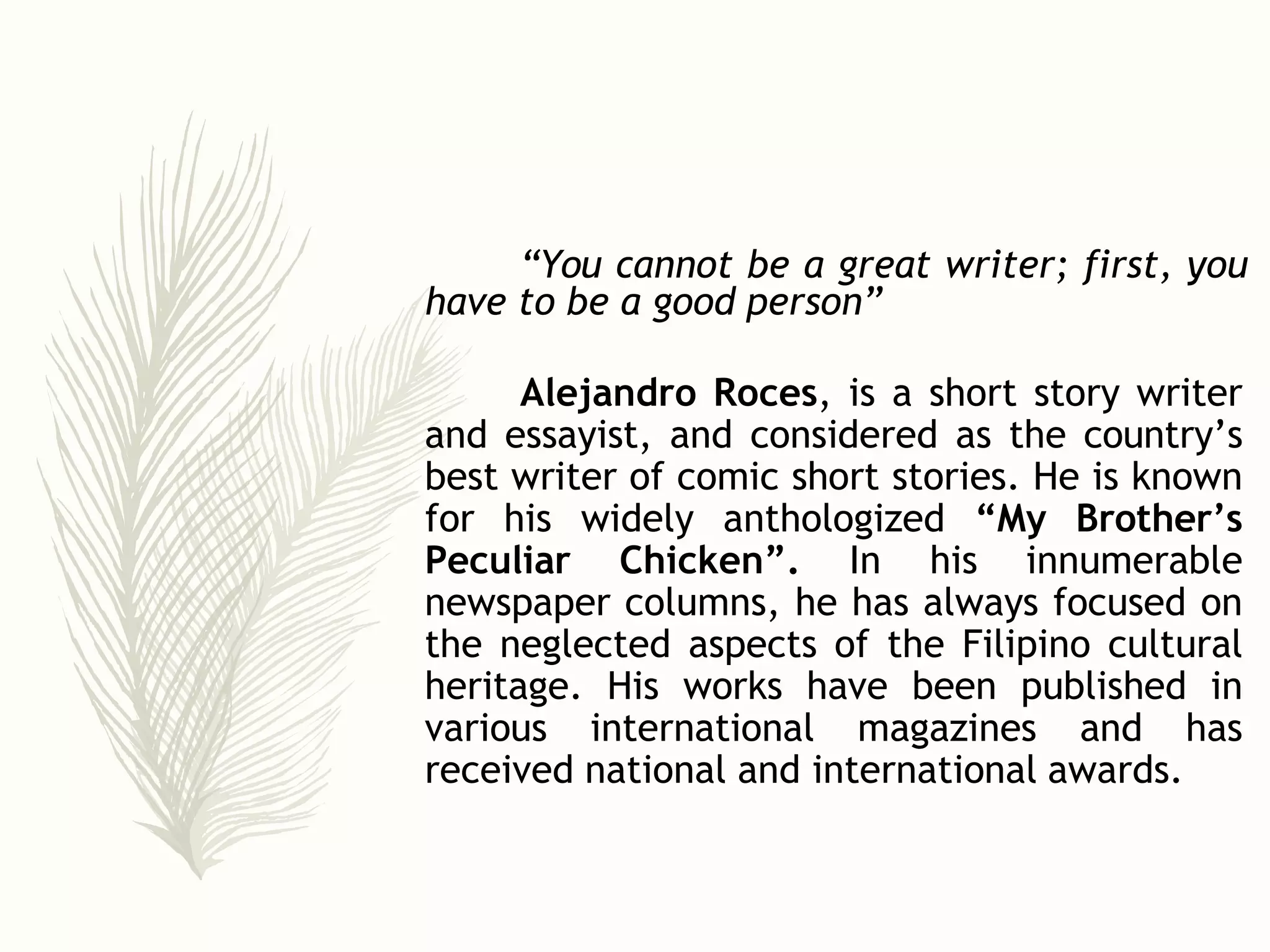


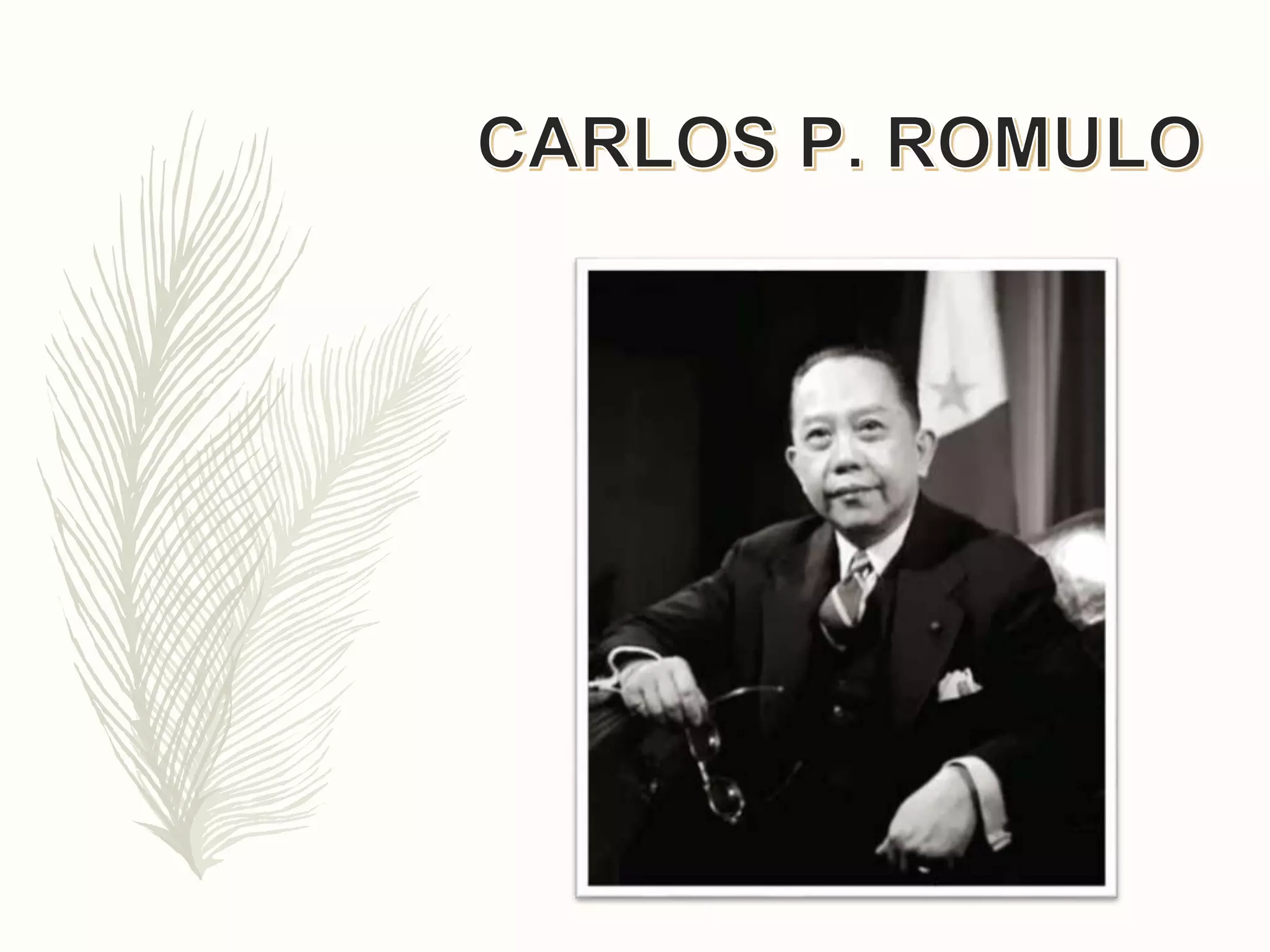








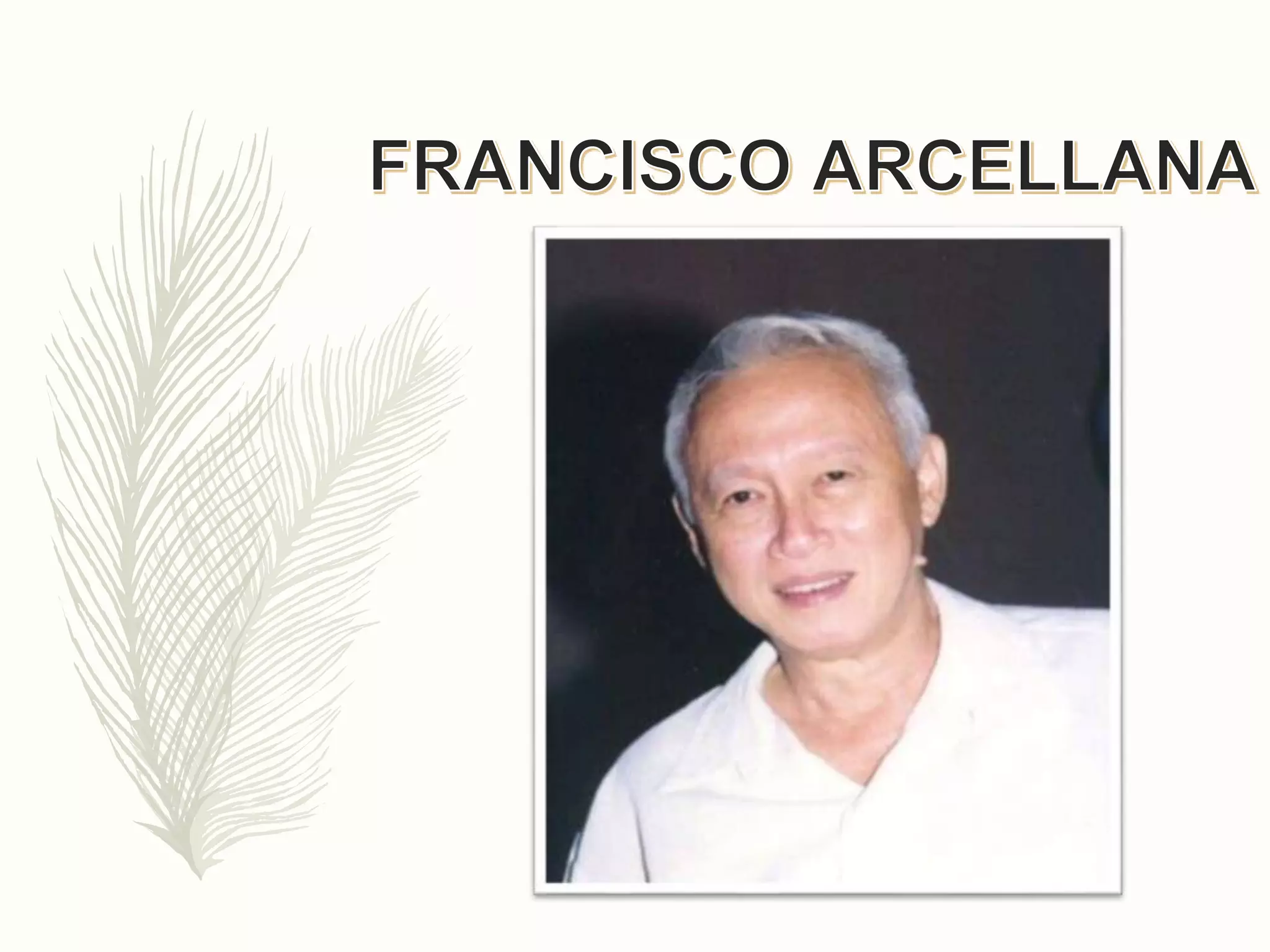








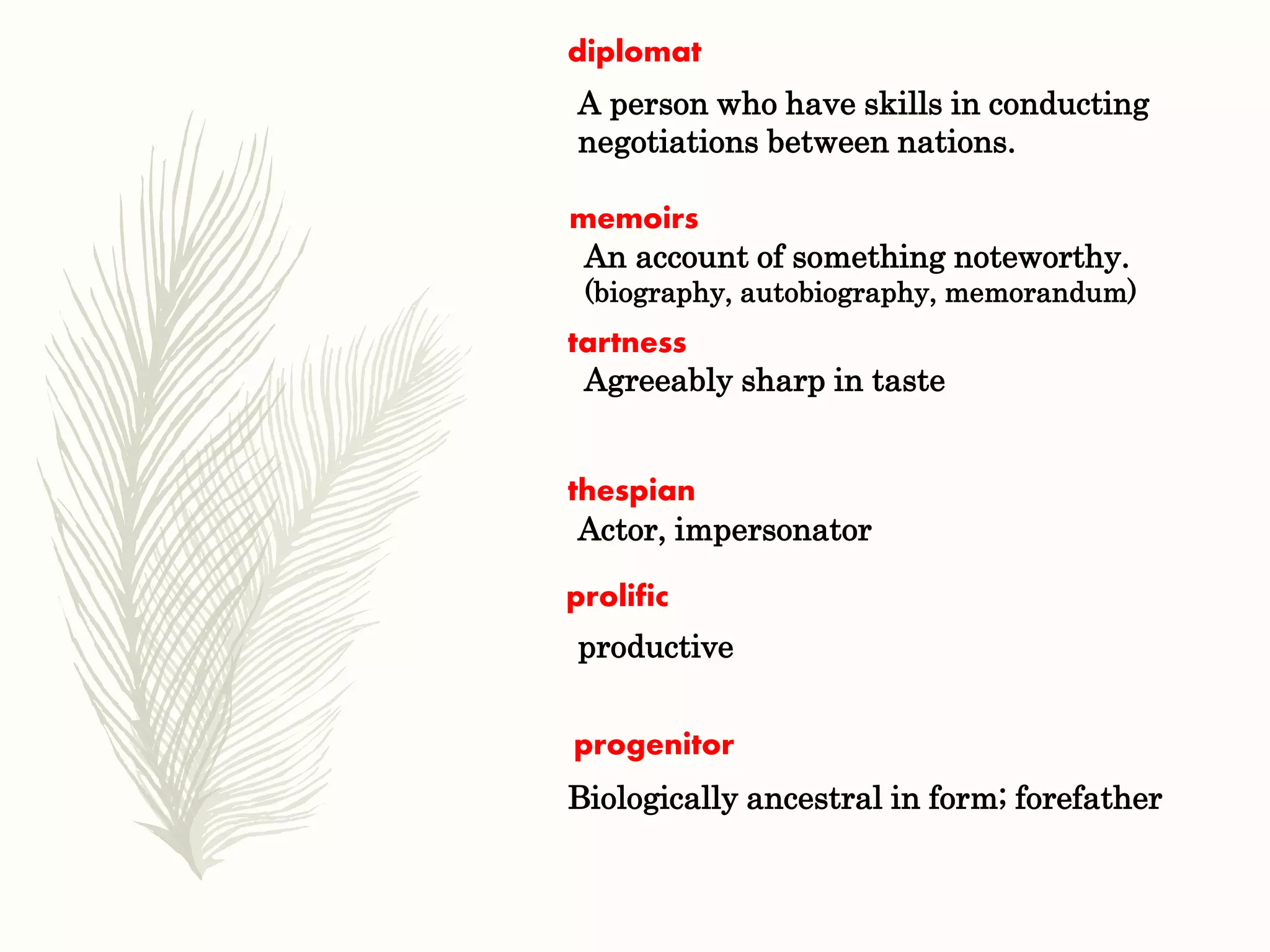

The document provides an overview of significant Filipino literary figures, highlighting their contributions to Philippine literature in English and Tagalog. It celebrates their diverse styles, cultural influences, and enduring legacies, showcasing poets, novelists, and scholars who shaped the literary landscape of the country. Key figures include Edith Tiempo, N.V.M. Gonzalez, Nick Joaquin, F. Sionil Jose, and others, each recognized for their unique voice and commitment to social issues.
The slide discusses terms related to literature such as 'librettist', 'satirical', and 'progenitor', outlining essential literary concepts.
Highlights the life and works of poet and critic Tiempo, underscoring her unique style and contributions to Philippine literature.
Focuses on Lumbera's contributions to Tagalog literature and his innovative approaches to poetry, librettos, and literary criticism.
Details Gonzalez's achievements as a fictionist and poet, showcasing his significant awards and notable works reflecting Filipino culture.
Explores Almario’s redefinition of Filipino poetry, his literary achievements, and mentoring young writers through workshops.
Discusses Bautista's contributions to Philippine literature as a writer, teacher, and critic, along with his major literary works.
Highlights Joaquin's literary distinction and notable works, emphasizing his influence on Filipino literature and cultural identity.
Describes Jose's extensive literary output driven by themes of national sovereignty and social justice in his works.
Examines Hernandez's dedication to social justice through literature and his contributions to Tagalog prose.
Focuses on Francisco’s classic novels, his advocate for Tagalog as a national language, and his contributions to literature.
Highlights Roces's role in promoting Filipino culture through his literary works and societal engagement.
Details Romulo's expansive career in writing and public service, highlighting his literary contributions and awards.
Discusses Villa's contributions to poetry, his unique styles, and his recognition in both national and international circles.
Covers Tinio's significant impact on Philippine theater and his contributions to poetry and various forms of drama.
Accounts Arcellana's transformation of the short story into a lyrical form, and his important literary works.
Presents Celerio's vast contributions to music and lyrics, emphasizing his national impact and record-breaking achievement.
Glossary of key literary terms that provide foundational definitions related to the earlier content discussed in slides.




















































